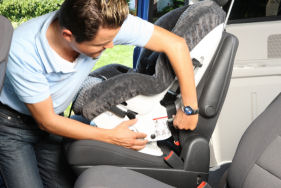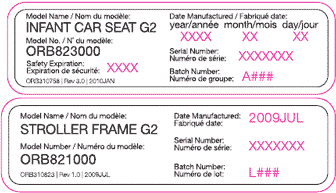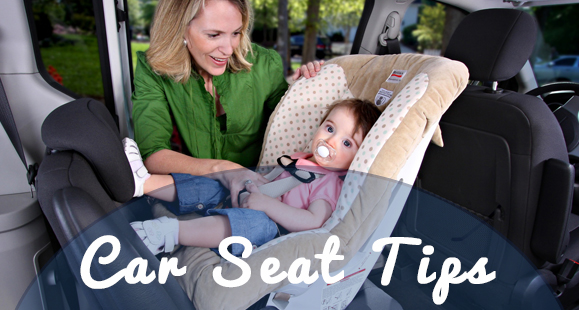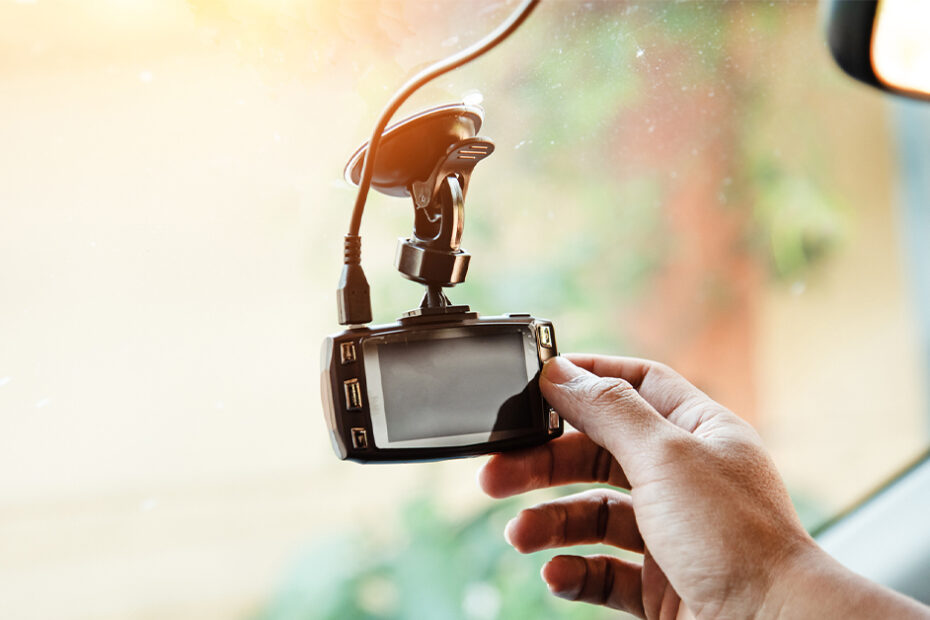One of the most confusing aspects of parenthood can be choosing and installing the right car seat. These important safety devices come in a myriad of styles, shapes and sizes, making it difficult for parents to determine which one is right for their child. Other questions arise as well, such as how to install them and if they are suitable for all ages. To clarify the confusing world of car seats, we have compiled a few basic tips that parents can follow.
Choose the Right Car Seat

Car seats are available in different sizes that suitable for different ages. Each of the following sizes is installed differently and will accommodate different weights:
-
Rear-Facing Seats– All infants up to 1 year of age should be in a rear-facing car seat.
-
Forward-Facing Seats– Once a child reaches 1 year of age, they can transition to a forward-facing car seat.
-
Booster Seat– Between the ages of 4 and 7 children can safely sit in a booster seat rather than a car seat.
These age ranges are good basic guidelines, but parents should refer to the height and weight requirements for each seat before transitioning to the next size up.
Proper Installation
 Read the installation instructions carefully when installing the seat, as they vary among manufacturers. Proper installation can be tested by rocking the car seat from side-to-side and from front-to-back. If the seat moves more than 1 inch in either direction, it is not installed correctly. Tighten all of the seat belts and straps and retest the seat.
Read the installation instructions carefully when installing the seat, as they vary among manufacturers. Proper installation can be tested by rocking the car seat from side-to-side and from front-to-back. If the seat moves more than 1 inch in either direction, it is not installed correctly. Tighten all of the seat belts and straps and retest the seat.
Rear-facing seats have an additional installation step, as they must be installed at an angle. Examine the seat carefully and look for an angle indicator or adjuster, which helps parents install the seat properly.
Inserting Children Into Car Seats
Having a properly installed seat isn’t enough if the infant or child isn’t positioned properly in it. Once the child is seated, ensure that the chest strap and other belts lie flat and are not twisted. The chest strap, for both forward and rear-facing seats, should cross the center of the shoulder and attach securely to the buckle at the child’s opposite side near the waist. If the seat has a chest clip, such as for infants, it should be centered on the chest at armpit level.
Registration
 Car seat manufacturers are constantly verifying safety features on their products and sometimes recall them if they are found to be unsafe. One of the first things that parents should so after purchasing a car seat is to register it because this is the best way they receive notification of any recalls and are informed on how to return or adapt the seat for safe usage.
Car seat manufacturers are constantly verifying safety features on their products and sometimes recall them if they are found to be unsafe. One of the first things that parents should so after purchasing a car seat is to register it because this is the best way they receive notification of any recalls and are informed on how to return or adapt the seat for safe usage.
The information in this article was obtained from various sources. This content is offered for educational purposes only and does not represent contractual agreements, nor is it intended to replace manuals or instructions provided by the manufacturer or the advice of a qualified professional. The definitions, terms and coverage in a given policy may be different than those suggested here and such policy will be governed by the language contained therein. No warranty or appropriateness for a specific purpose is expressed or implied.

